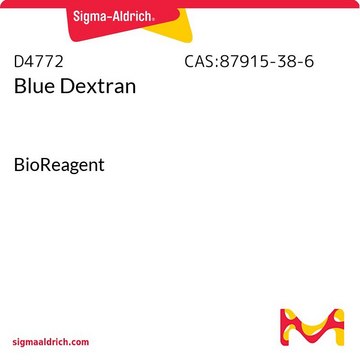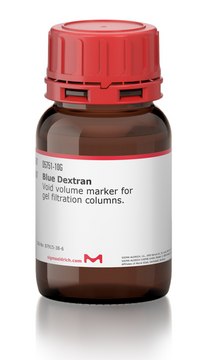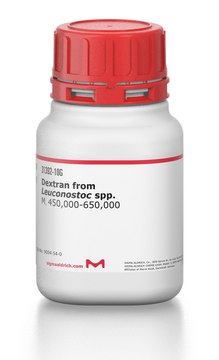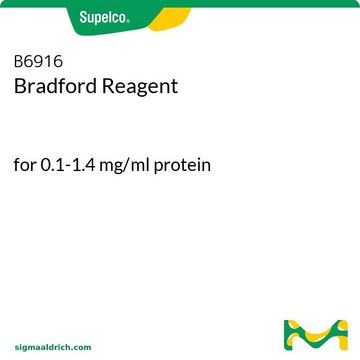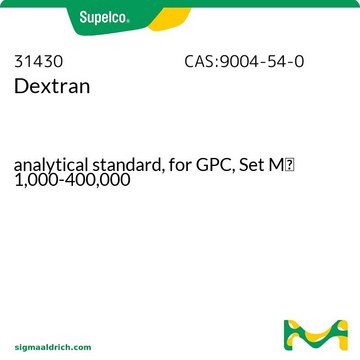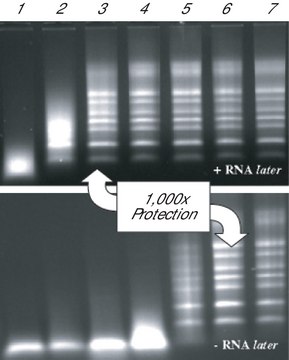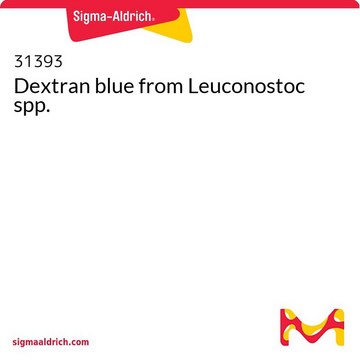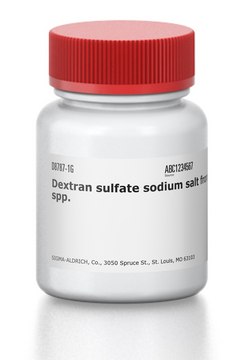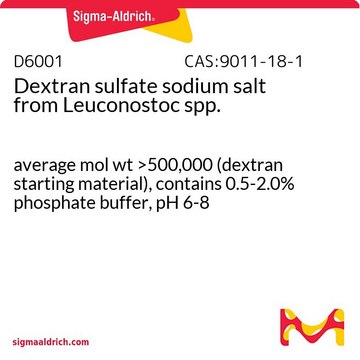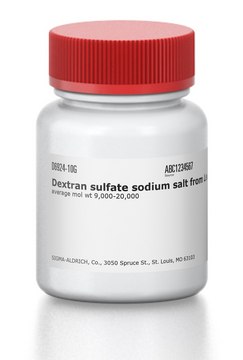About This Item
Recommended Products
biological source
bacterial (Leuconostoc spp.)
form
powder or crystals
mol wt
Mr ~2000000
storage temp.
room temp
1 of 4
This Item | D8787 | D6001 | D6924 |
|---|---|---|---|
| form powder or crystals | form powder or crystals | form powder | form powder |
| storage temp. room temp | storage temp. - | storage temp. - | storage temp. room temp |
| mol wt Mr ~2000000 | mol wt avg mol wt >500,000 (dextran starting material) | mol wt average mol wt >500,000 (dextran starting material) | mol wt average mol wt 9,000-20,000 |
Application
Other Notes
Storage Class Code
11 - Combustible Solids
WGK
WGK 3
Flash Point(F)
Not applicable
Flash Point(C)
Not applicable
Personal Protective Equipment
Choose from one of the most recent versions:
Already Own This Product?
Find documentation for the products that you have recently purchased in the Document Library.
Articles
Explore FITC-labelled polysaccharides and their properties, including impact of molecular weight on molecule dimensions.
Our team of scientists has experience in all areas of research including Life Science, Material Science, Chemical Synthesis, Chromatography, Analytical and many others.
Contact Technical Service